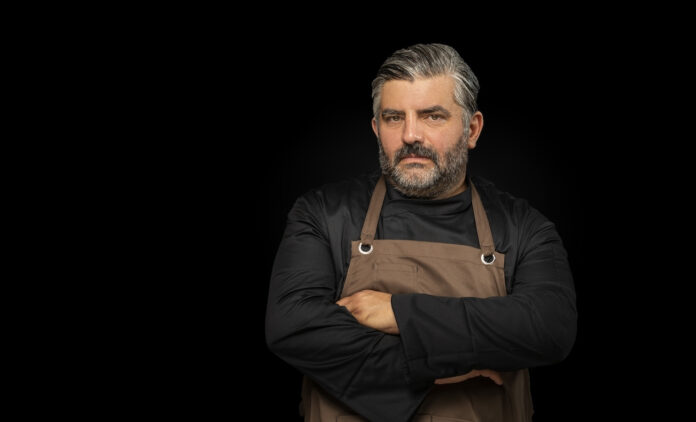DUBAI: The idea behind the tent came from imagining how our Arabian forefathers, the nomads, would have constructed a place of shelter if they had no sheep. Instead of animal leather, I supposed, they would have used vegan leather. Just as they would eat the meat, an aubergine’s pulp can be consumed and its skin used as leather.
Last year, I made masks out of aubergine leather. This time, I wanted to go a step further and create a larger piece. I wanted the tent to resemble the dunes in the desert, so, at a friend’s architectural firm, I made a model of it to understand the final dimensions we would need.
Several 60 cm-by-60 cm pieces of aubergine leather were stitched together and flown down to Dubai to create the tent. (Supplied)
The next step was to scout out 400 large aubergines in the vegetable markets of Amman. The skin of the aubergines is taken through various natural deconstructing methods — cooking, freezing, dehydrating — until it becomes tough. The aged skin is natural and sustainable and produces different colours on the leather that are not always uniform. The process to create a batch takes about two weeks. The material can last for years. I still have a sample I created three years ago.
Several 60 cm-by-60 cm pieces of aubergine leather were stitched together and flown down to Dubai to create the tent. We installed a hovering tent, grounded by a peg on a bed of sand.
The tent is biodegradable. (Supplied)
The tent takes us back in time, to the concept that our Arabian forefathers created spaces providing shelter for the families with materials at their disposal. By sustainably repurposing materials, we can preserve the environment. As the tent is biodegradable, it also acts as a food source for wildlife, beyond the exhibition.
But the tent also, simultaneously, takes us in to the future, redefining sustainable art and living, ensuring no food wastage.

